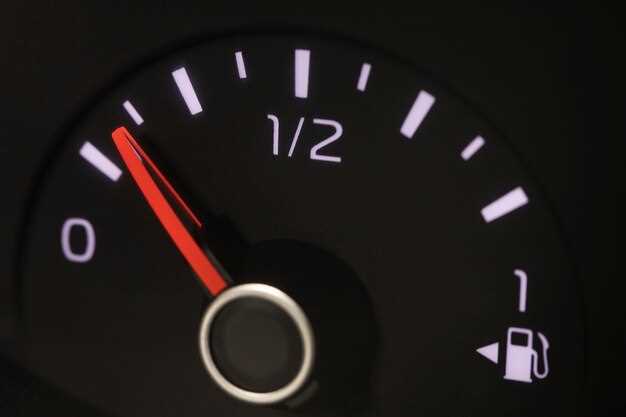
The engine thermostat plays a crucial role in maintaining optimal operating temperatures within a vehicle’s engine. It regulates the flow of coolant to ensure that the engine reaches its ideal temperature quickly and maintains that temperature during operation. A malfunctioning thermostat can lead to significant issues, including overheating or insufficient heating, which can negatively impact engine performance and longevity.
One of the primary signs of a failing engine thermostat is irregular temperature readings on the dashboard gauge. If the temperature gauge fluctuates unexpectedly or remains at cold even after the engine has been running, it may indicate that the thermostat is stuck open or closed. Engine temp should steadily rise to an appropriate level; inconsistencies in this reading can lead to serious engine problems if not addressed promptly.
Another warning sign is the presence of cool air blowing from the heater, which implies that the engine is not reaching the required temperature for efficient heating. Additionally, if the engine temperature consistently rises above normal levels, it could mean that the thermostat is malfunctioning and not allowing coolant to flow as needed. In such cases, early detection and replacement of the thermostat can prevent extensive damage and costly repairs.
Recognizing Overheating Symptoms Related to the Thermostat

One of the critical components of an engine’s cooling system is the thermostat, which regulates the flow of coolant to maintain optimal operating temperatures. When the thermostat malfunctions, it can lead to severe overheating issues. Recognizing the symptoms of overheating is essential for preventing engine damage.
One of the most noticeable signs is the temperature gauge reading. If the gauge consistently points towards the high end, it may indicate that the thermostat is stuck closed, preventing coolant circulation. Additionally, if steam is observed rising from the engine compartment, this could signify that the engine is overheating due to insufficient coolant flow.
Another symptom is the engine warning light, which may illuminate on the dashboard. This indicator often signals overheating conditions or other related issues within the cooling system. It is crucial to take this warning seriously, as ignoring it may result in extensive engine damage.
Furthermore, unusual noises like bubbling or hissing sounds may suggest that the engine is overheating. These noises typically result from trapped air or boiling coolant, indicating a failure in proper temperature regulation by the thermostat. Pay attention to these audio cues, as they can provide insight into underlying problems.
Finally, check for leaks or pooling coolant beneath the vehicle, as overheating can lead to coolant expansion and pressure build-up, causing hoses to fail. These leaks can exacerbate the overheating issue and signify a thermostat failure. Addressing these symptoms promptly can help maintain engine health and prevent costly repairs.
Diagnosing Fluctuating Engine Temperatures
Fluctuating engine temperatures can signal an underlying issue with the engine’s thermostat. This component plays a crucial role in regulating the flow of coolant, ensuring the engine maintains an optimal operating temperature. When the thermostat fails or operates inefficiently, it can lead to erratic temperature readings.
One common sign of a malfunctioning thermostat is inconsistent temperature readings on the dashboard gauge. If the needle fluctuates between hot and cold abruptly, it may indicate that the thermostat is stuck open or closed. A stuck open thermostat results in insufficient engine heating, while a stuck closed thermostat can cause the engine to overheat.
Another diagnostic method involves monitoring coolant flow. When the engine is warmed up, check the upper radiator hose. If it remains cool while the engine temperature rises, the thermostat may be preventing coolant circulation. Conversely, if the coolant flows too rapidly when the engine is cold, it may suggest the thermostat is not closing properly.
In some cases, air pockets in the cooling system can also cause fluctuating temperatures. Bleeding the system can help eliminate these pockets and restore consistent cooling action. However, if symptoms persist, replacing the thermostat might be necessary to ensure reliable engine temperature control.
Overall, diagnosing fluctuating engine temperatures requires a systematic approach, focusing on the thermostat’s operation to prevent potential engine damage. Regular maintenance can help identify these issues before they become serious problems, securing engine longevity and performance.
Evaluating Coolant Leaks and Their Impact on Thermostat Performance

Coolant leaks can significantly affect the performance of an engine thermostat, as they disrupt the system’s ability to maintain optimal operating temperatures. The thermostat is designed to regulate engine temperature by opening and closing based on the coolant’s temperature. When leaks occur, the coolant level drops, leading to inadequate cooling.
A low coolant level can cause the engine to overheat, as the thermostat may not receive enough coolant to accurately gauge the temperature. This situation can lead to a malfunction where the thermostat either fails to open, trapping hot coolant in the engine, or opens too early, preventing the engine from reaching its ideal operating temperature. Both scenarios can severely affect engine performance and longevity.
In addition to affecting the thermostat’s function, coolant leaks can introduce air into the cooling system. Air bubbles can create hotspots, leading to uneven heating and potential thermal stress on engine components. This not only hampers thermostat efficiency but can also result in further engine damage if left unaddressed.
Detecting coolant leaks promptly is crucial for ensuring thermostat performance and overall engine health. Regularly inspecting for signs of leakage, such as puddles under the vehicle or a drop in coolant levels, can help identify potential issues before they escalate. By addressing leaks, vehicle owners can maintain the functionality of the thermostat and ensure the engine operates within the correct temperature range.
